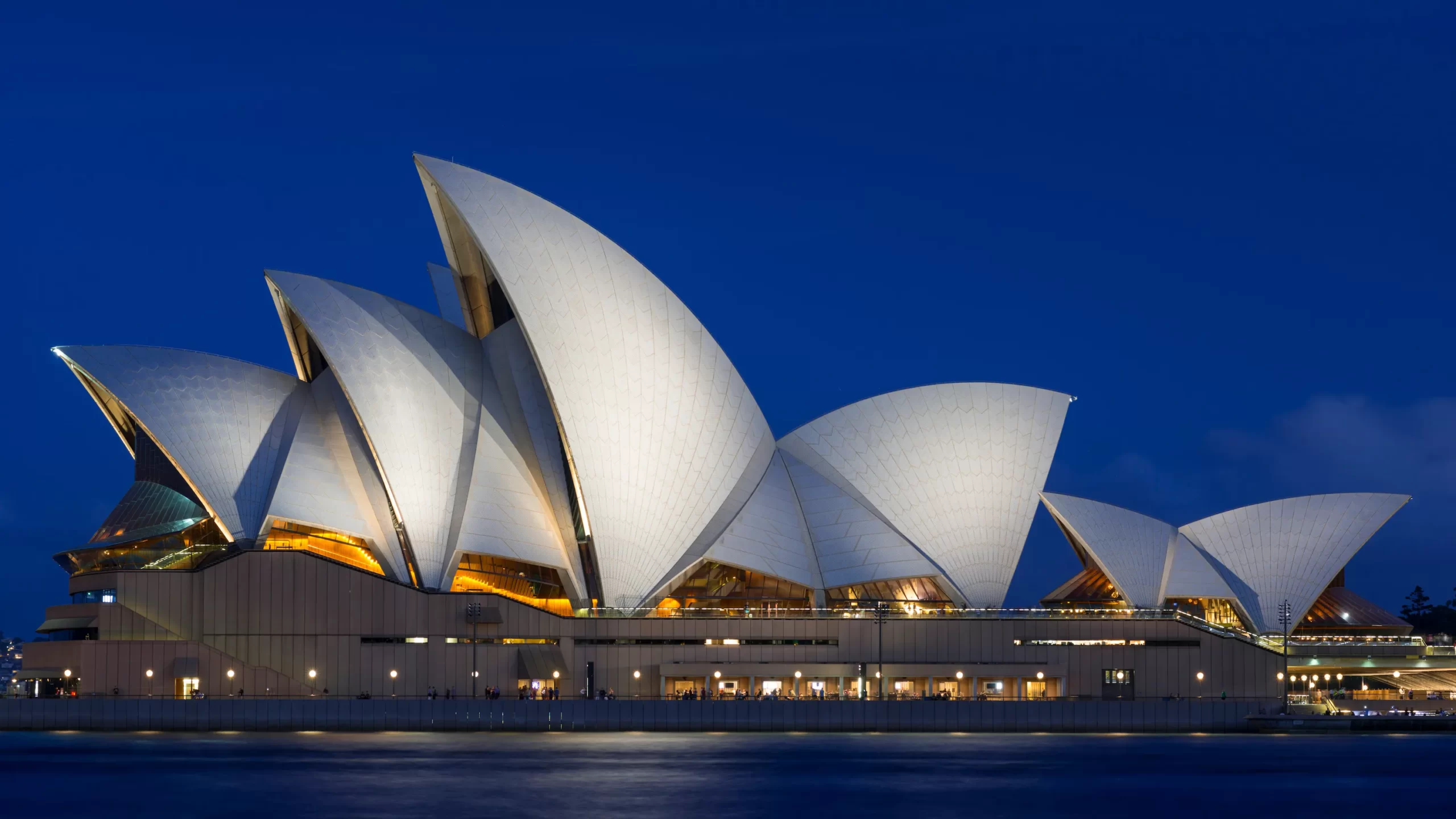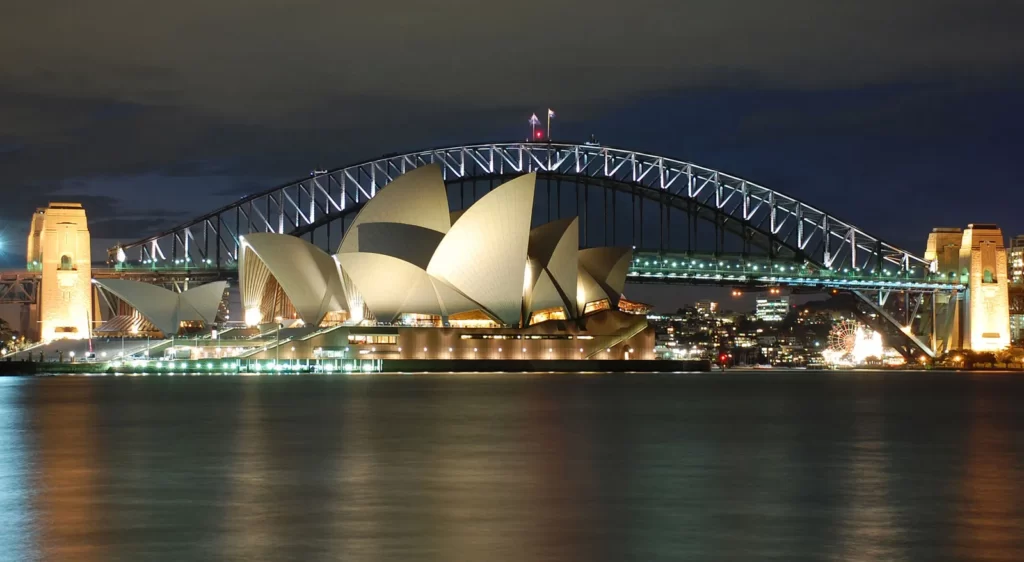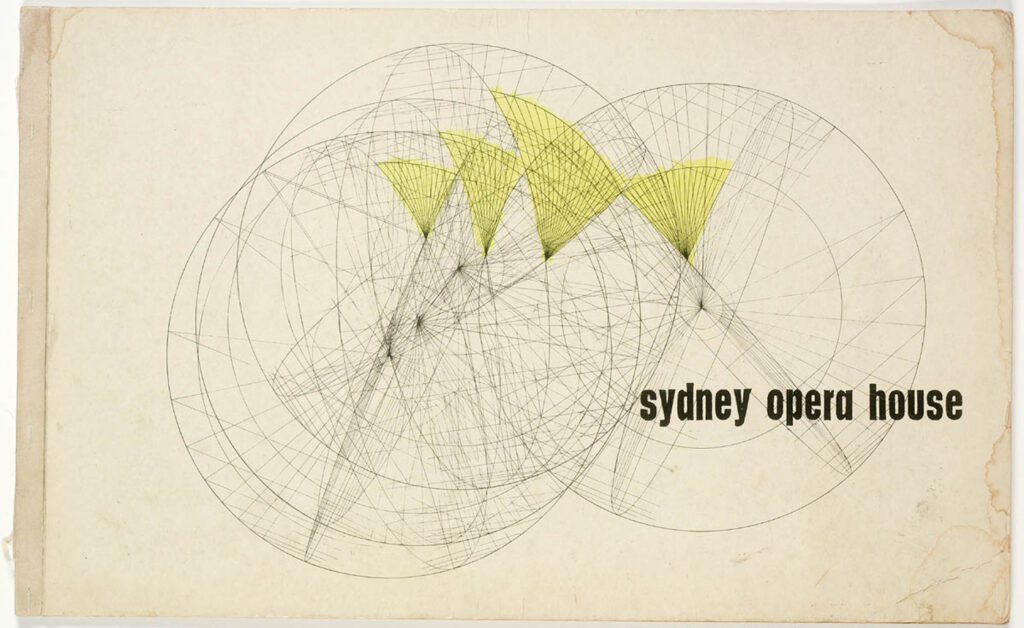
Nestled on the picturesque shores of Sydney Harbour, the Sydney Opera House stands as an enduring symbol of architectural brilliance, cultural significance, and artistic innovation. This iconic structure has transcended its role as a mere performing arts venue to become a global icon, representing the spirit of Sydney and the creative aspirations of humanity.
Architectural Marvel: A Vision Realized
The genesis of the Sydney Opera House can be traced back to the late 1940s when the New South Wales government initiated an international design competition to establish a new opera house on Bennelong Point. The competition drew entries from prominent architects worldwide, but it was the radical and visionary design of Danish architect Jørn Utzon that captured the imagination of the judges. His proposal featured a series of shell-like structures that seemed to emerge organically from the landscape, challenging conventional architectural norms and embodying a harmonious blend of form and function.
Construction of the Opera House commenced in 1959, with Utzon’s innovative approach facing numerous technical challenges and budgetary constraints. The most distinctive feature of the Opera House—the series of interlocking precast concrete shell structures—required unprecedented engineering solutions. The final design incorporated a unique ribbed pattern on the shells, evoking the sails of a yacht billowing in the wind. This imaginative integration of aesthetics and engineering exemplified Utzon’s belief in architecture as an art form that could harmonize with its surroundings.

Cultural Significance: A Hub of Artistic Expression
Since its inauguration in 1973, the Sydney Opera House has been at the heart of Australia’s cultural landscape, serving as a platform for an eclectic array of artistic disciplines. The complex comprises multiple performance venues, including the Concert Hall, the Joan Sutherland Theatre, the Drama Theatre, and the Utzon Room. Each of these spaces has been meticulously designed to offer optimal acoustics and an intimate connection between performers and audiences.
The Concert Hall, with its grand organ and seating for over 2,000 people, is renowned for hosting symphonic performances by world-class orchestras. The Joan Sutherland Theatre provides an intimate setting for opera and ballet productions, showcasing the vocal and choreographic talents of artists. The Drama Theatre fosters experimental and contemporary theater productions, while the Utzon Room, named in honor of the architect, offers a flexible space for chamber music, lectures, and cultural events.
Beyond the realms of traditional performances, the Sydney Opera House has expanded its repertoire to encompass diverse forms of artistic expression. From modern dance and multimedia presentations to indigenous performances and thought-provoking talks, the Opera House endeavors to reflect the evolving cultural tapestry of Australia and the global community.
Architectural Legacy and UNESCO World Heritage Status
The Sydney Opera House’s architectural ingenuity, cultural contributions, and its role as a beacon of global architectural heritage led to its designation as a UNESCO World Heritage Site in 2007. This distinction underscores the Opera House’s status as a work of art that transcends its functional purpose and resonates with humanity’s pursuit of excellence and beauty.

Jørn Utzon’s vision was not only an architectural triumph but also a testament to his understanding of context and place. The Opera House’s location on Bennelong Point, adjacent to the Sydney Harbour Bridge and the vibrant Circular Quay, ensures that it is an integral part of Sydney’s urban fabric. The synergy between the natural and built environments creates a visual harmony that is admired by millions of visitors who flock to its shores each year.
An Iconic Destination: A Global Symbol of Sydney
The Sydney Opera House has become an emblem not only of architectural innovation and artistic creativity but also of the city itself. Its distinctive silhouette has become synonymous with Sydney’s identity and is often the first image that comes to mind when envisioning the city’s skyline. The Opera House’s ethereal presence against the backdrop of the sparkling blue waters of Sydney Harbour has made it a magnet for photographers, artists, and travelers seeking to capture its timeless beauty.
Moreover, the Opera House’s iconic image has permeated popular culture, appearing in films, television shows, literature, and artworks. Its universal appeal and recognition have made it a global ambassador for Sydney and Australia, attracting tourists from around the world who wish to witness its splendor firsthand.
A Center for Creative Exploration: Pushing Boundaries
In addition to its historic significance, the Sydney Opera House continues to evolve as a hub for innovative artistic expression and creative exploration. The Opera House’s commitment to fostering emerging talents, nurturing contemporary performances, and engaging with diverse communities ensures that it remains at the forefront of cultural discourse.
The House’s annual program features a rich tapestry of events, ranging from classical concerts and operatic masterpieces to avant-garde theater and multimedia installations. The Vivid Sydney festival, a stunning light and music extravaganza, transforms the Opera House into a canvas of visual enchantment, merging technology and art in a breathtaking spectacle.
Conclusion: A Triumph of Human Ingenuity
The Sydney Opera House stands as a triumphant embodiment of human imagination, innovation, and collaboration. Its sweeping design challenges architectural norms, its cultural offerings transcend boundaries, and its symbolic resonance stretches far beyond Australia’s shores. This architectural masterpiece not only enriches Sydney’s skyline but also enriches the collective human experience, serving as a reminder of the boundless possibilities of creative expression and the lasting impact of visionary architecture. The Sydney Opera House remains a living testament to the power of art and architecture to shape the world and inspire generations to come.